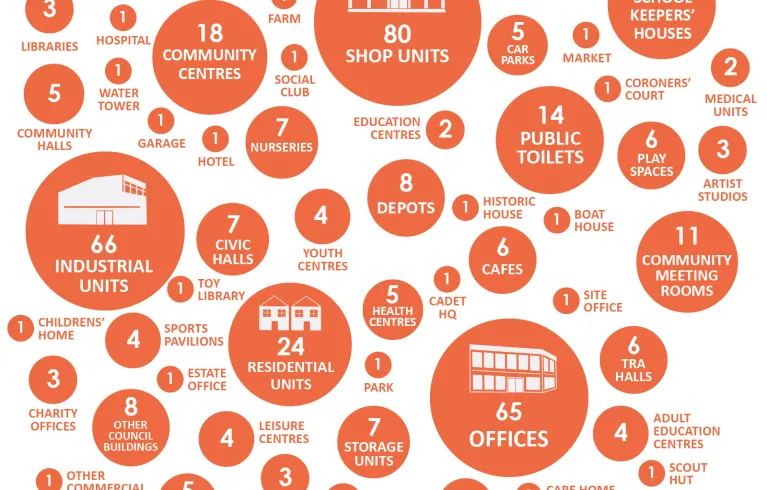
Key information
Publication type: General
Publication date:
Contents
1 sections
London's Dead Spaces: bringing them back to life
Londoners have told me they are acutely aware that community spaces and buildings in their local area are sitting empty. They call them ‘dead spaces’ – a reflection of the strong feelings people have when they see this kind of wasted opportunity on their doorsteps. Yet, across London, hundreds of community groups are crying out for easier ways to take over empty buildings.
My report exposes the huge range of empty publicly owned buildings and facilities across London. This research has found that councils in 25 London boroughs own 442 sites that are currently out of their normal use. Most of these are simply left empty and unused, leaving gaps in their communities for an average of four years at a time.
The average number per borough is 24, creating a total of 781 if this average was reflected in all London councils. The range of facilities affected goes far beyond high streets, and numbers 80 retail units, 66 industrial units and 65 offices. Unique properties include an unused farm, a hospital, a golf clubhouse, a woodland and a civil defence bunker.
Key findings from the 25 councils that responded to requests for information:
- These councils own at least 442 dead spaces across London – with a wide variety of facilities currently out of use.
- Most closures are due to business struggles and service closures rather than disrepair.
- Average number per borough is 24.
- Average floorspace is 424 square metres.
- Average length of time a property has been out of normal use is 4 years.
Now is the time to empower local people, councils, and charities to take these spaces over, and I want to see action from the Mayor and Government.
Key recommendations:
- While a range of work is being done as part of pandemic recovery, the focus on businesses and high streets risks missing the chance to think holistically about the wider range of dead spaces that councils and residents have told me about.
- Work should be done by the Mayor of London to map and evaluate the wider range of empty spaces in our city, working with local communities through Community Improvement Districts and, ideally, a broader People’s Land Commission.
- Recovery funding should include specific help for councils and community groups to make more use of empty buildings of all kinds and include capital and revenue contributions. This could come from Government (through initiatives like Power to Change) or the Mayor of London through his recovery missions.
Legislation needs to be improved to:
- make it easier for local authorities to use compulsory purchase powers,
- introduce a true community right to buy at reasonable cost, as exists in Scotland,
- enable more use of orders to bring privately owned space back into use,
- bring in ‘meanwhile use’ as a planning use class to take the bureaucracy out of temporary changes of use for community benefit.
Related documents
Mayor's response to Sian Berry's Dead Spaces report
Letter to DLUHC about recommendations in Dead Spaces report
Response from DLUHC re recommendations in Dead Spaces report